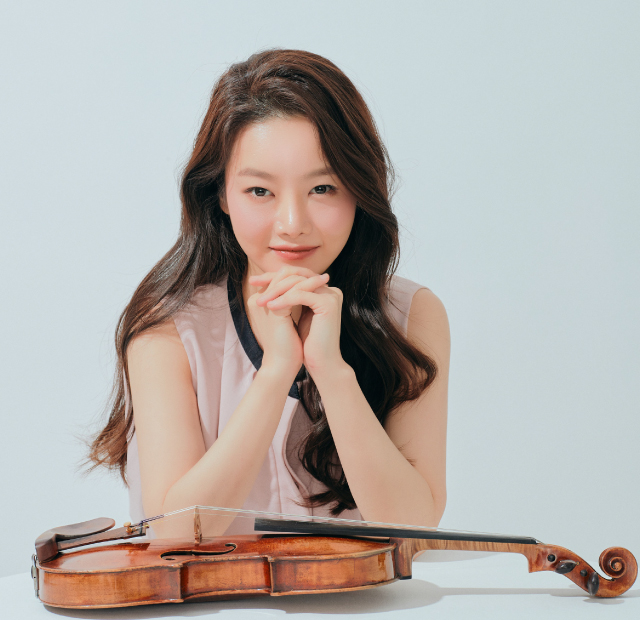Asia Orchestra Week 2022
The Sponsored Performance at the Reiwa 4 (77th) National Arts Festival, Agency for Cultural Affairs
Asia Orchestra Week 2022
Symphony Together with You♪
Thank you for your visiting the National Arts Festival, Agency for Cultural Affairs “Asia Orchestra Week 2022”.
Since its first season in 1946, the Arts Festival has offered every citizen opportunities to
experience the finest pieces of work and promote and advance artistic creativity.
For a series of orchestral concerts, ‘Asia Orchestra Week’ since 2002, we invite professional orchestras of the Asia-Pacific region.
Please enjoy the rich sounds of each orchestra to your heart’s content.
Performance
-
Manila Symphony Orchestra
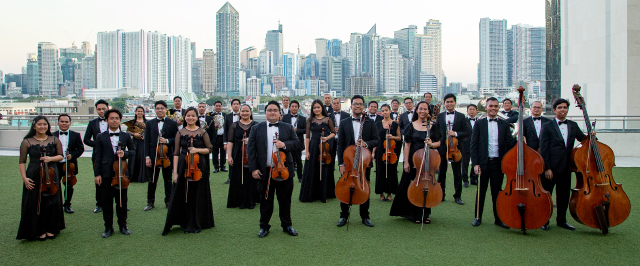 Conductor/Marlon ChenCello/Damodar Das Castillo
Conductor/Marlon ChenCello/Damodar Das Castillo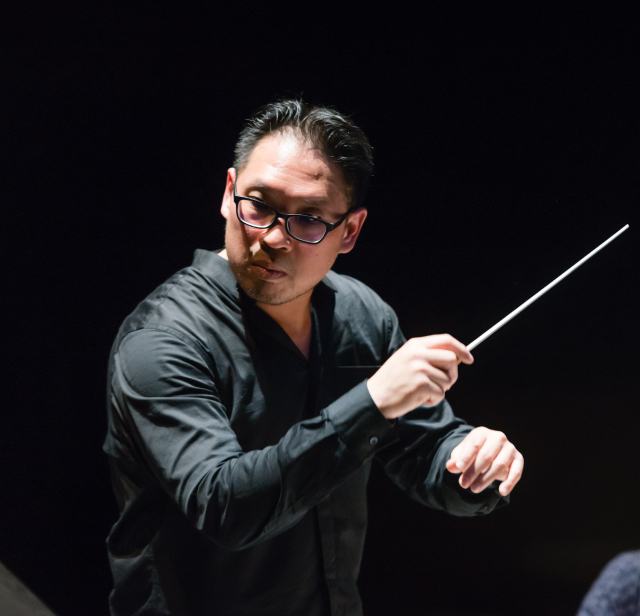
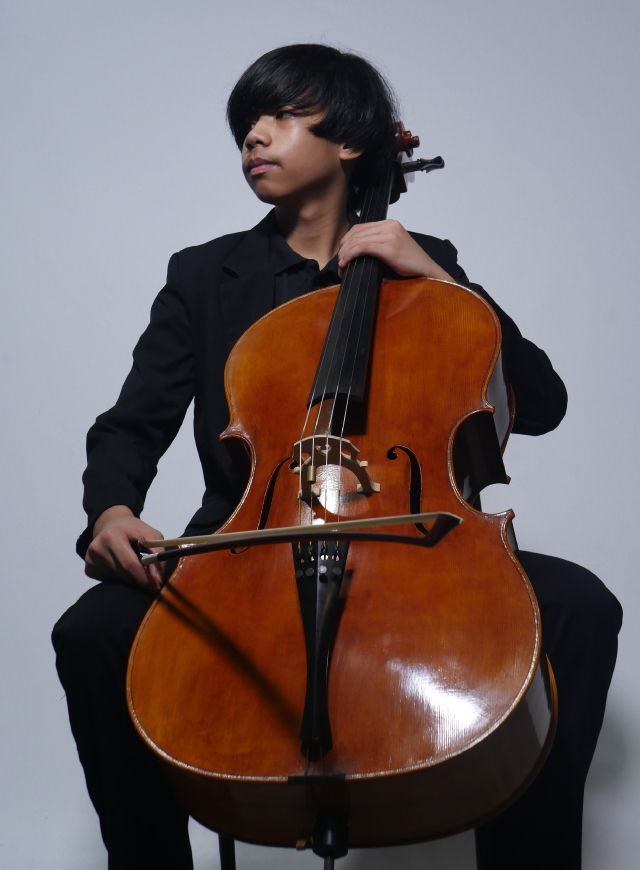 Lucio San Pedro:Lahing Kayumanggi Elgar: Cello Concerto Prokofiev : Ballet Suite from Romeo and Juliet(Marlon Chen Selection)Wednesday, October 5, 2022 Live recording Venue: Tokyo Opera City Concert Hall
Lucio San Pedro:Lahing Kayumanggi Elgar: Cello Concerto Prokofiev : Ballet Suite from Romeo and Juliet(Marlon Chen Selection)Wednesday, October 5, 2022 Live recording Venue: Tokyo Opera City Concert Hall -
Ryukyu Symphony Orchestra
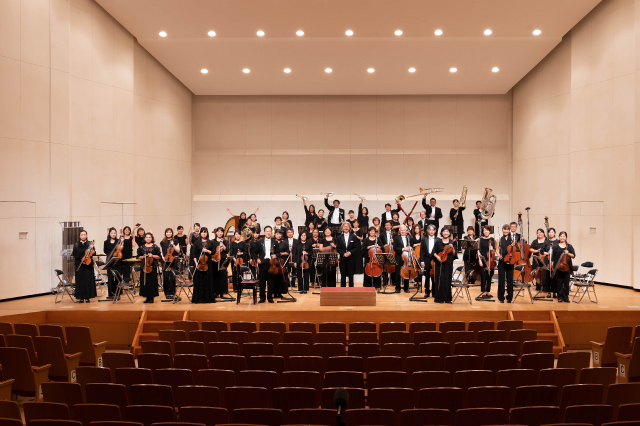 Conductor/Otomo NaotoTraditional Okinawan music and Ryukyu dance/
Conductor/Otomo NaotoTraditional Okinawan music and Ryukyu dance/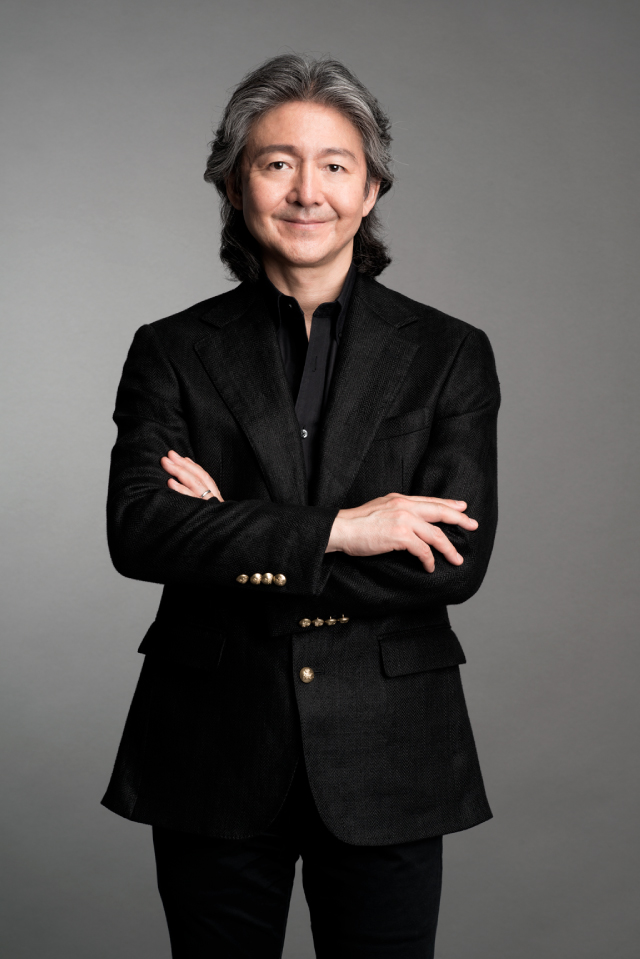
©Rowland Kirishima
Okinawa Prefectural University of the Arts, Ryukyu Performing Arts Major Alumni AssociationPiano/Hagiwara Mami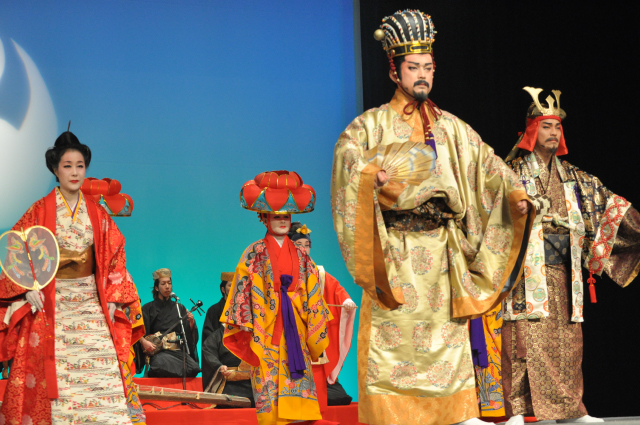
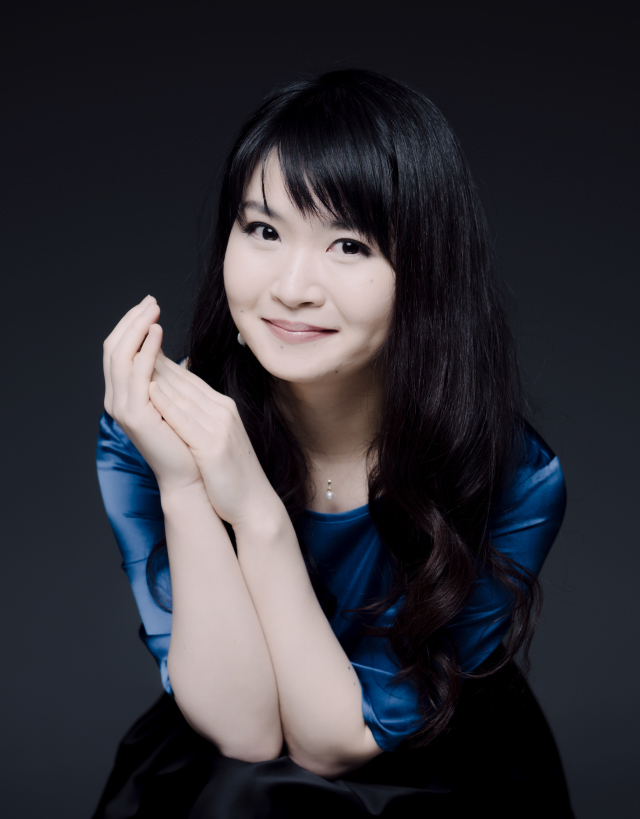
©Marco Borggreve
Nakamura Toru : KAJADEFU For Ryukyu Traditional Music, Classical Dance and Orchestra Haginomori Hideaki : Commissioned Work by the Ryukyu Symphony Orchestra
― To celebrate the 50th anniversary of Okinawa’s reversion to Japan Ravel:Piano Concerto in G Major Tchaikovsky : Symphony No.5 in E minor, op64Thursday, October 6, 2022 Live recording Venue: Tokyo Opera City Concert Hall -
KBS Symphony Orchestra
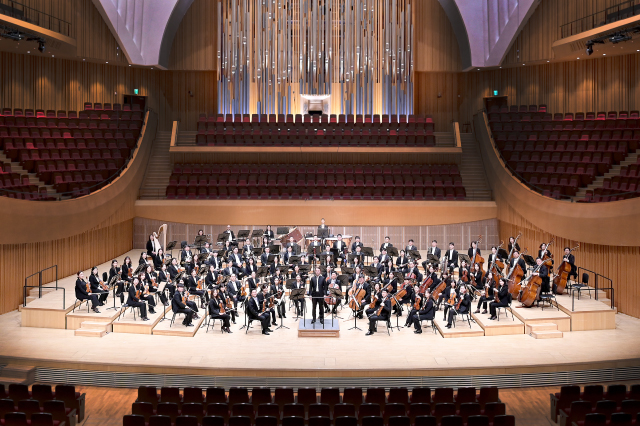 Conductor/Hankyeol YoonViolin/Bomsori Kim
Conductor/Hankyeol YoonViolin/Bomsori Kim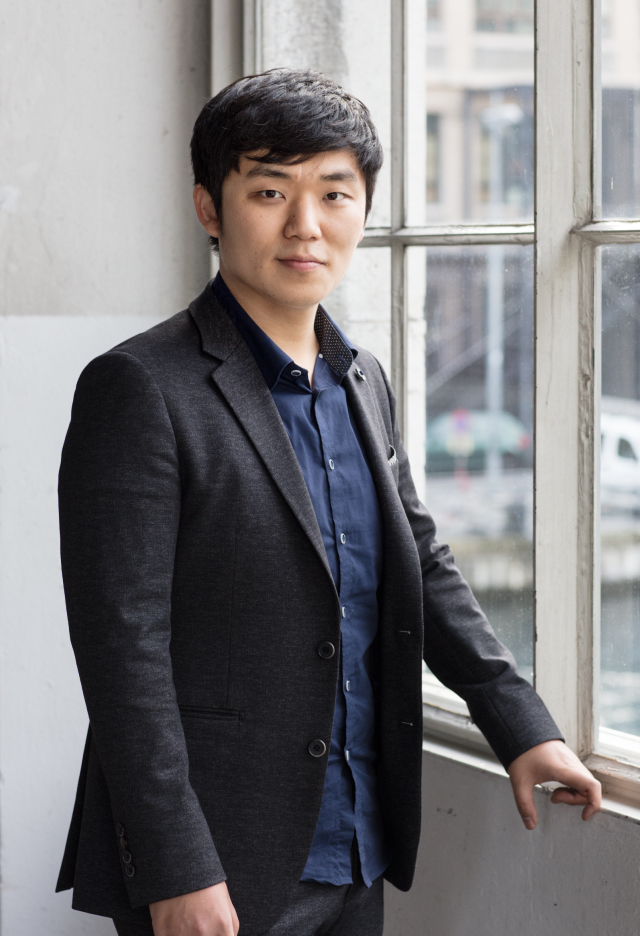
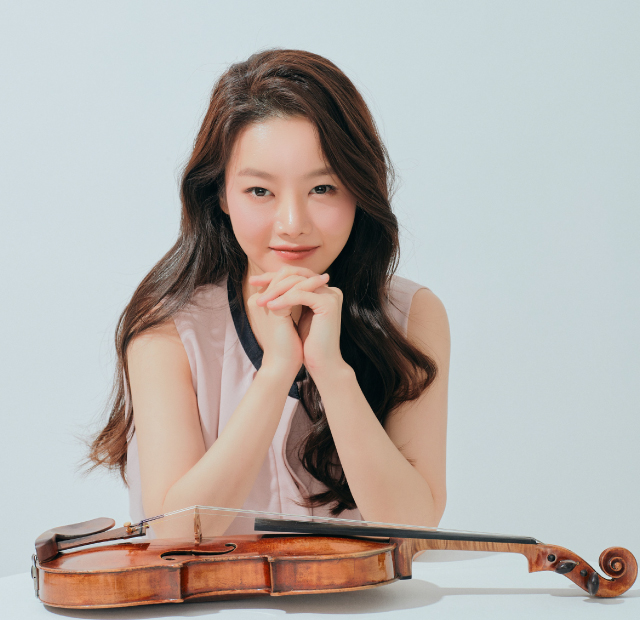 J. Strauss II: Overture <Die Fledermaus> Bruch : Violin concerto No. 1 in G minor, op.26 Isang Yun : Symphony No. 2 (1984)Friday , October 7, 2022 Live recording Venue: Tokyo Opera City Concert Hall
J. Strauss II: Overture <Die Fledermaus> Bruch : Violin concerto No. 1 in G minor, op.26 Isang Yun : Symphony No. 2 (1984)Friday , October 7, 2022 Live recording Venue: Tokyo Opera City Concert Hall
Program Notes
Lucio San Pedro:Lahing Kayumanggi
Lucio San Pedro (1913-2002), born into a family of professional musicians in the U.S.-governed Philippines, is one of the first-generation classical music style composers on these islands. Surviving through the turbulent 20th century, from the colonial period to the struggle against rulers, Japanese occupation, and independence from the U.S., San Pedro bequeathed a wide range of works including orchestral pieces, lyrical art songs, choral pieces, brass band marches, city anthems, arrangements of melodies familiar to Filipinos, and so on. Brass bands in the Philippines frequently perform his "Independence March" and "Festival March". In 1991, President Corazon C. Aquino proclaimed San Pedro a National Artist of the Philippines for Music, and his portrait was featured on a postage stamp.
This 12-minute single-movement symphonic poem, entitled "Brown Man" in Tagalog, was written in 1961 for concert band as a commission by the Music Promotion Foundation of the Philippines, dedicated to the Filipino people for their heroic struggle against colonial rule. Although titled as "symphonic poem," it has no sonata structures nor rondo forms like those of Richard Strauss but shows a figure of the compact and straightforward sound poem with the Romantic style. The work provides a bird's-eye view of the history of the Philippines from pre-colonial times to its independence in orchestral sound.
Using the rhythmic motifs of a traditional Filipino dance "Kumintang," the tranquil introduction reveals the scenery of peaceful islands before the Spanish invasion. Allegro animato implies the turmoil after the invasion, followed by Lento ma non troppo con summa felvole calm sounds. The joy of the people living on the islands are shown in Allegretto mas eleganza, and the struggle for independence in Allegro animato. After a struggle in Alla Marcia section reaches the final part, horns against tremolo strings, horns roar local popular song "Bahay Kubo (Country House)" in tranquillo solemne, praising the triumph of the predecessors.
Elgar: Cello Concerto
Born in Worcester as the son of a piano tuner, Elgar (1857-1934) was almost self-taught composer. At the age of 32, when he managed to be a local musician working in central England, he fell in love with a woman nine years his senior. After marrying her, he moved to London but without success and returned to his home country in disappointment. Eventually, his cantata works began to gain recognition, and in 1899, his "Enigma Variations" premiered in London, which was a great success. Shortly after the turn of the century, his military march "Pomp and Circumstance" became a huge national hit, and he was knighted.
Near the end of World War I, Elgar stepped into his final years and left his only cello concerto, which, along with Dvorák's, is the greatest masterpiece in this genre. The first movement, in moderato sonata form, begins with the solo cello murmuring a melancholy adagio. The second movement, from Lento to Allegro molto, is a complex emotional experience, not just a display of brilliant virtuosity, with the cello's frequent use of special techniques. The third movement, Adagio, is full of the charm of the cello's singing. The fourth and final movement, Allegro ma non troppo, is rich in shadows while its virtuoso expression and musical fullness are matched. The soloist, Damodar Das Castillo, is a Filipino boy prodigy studying in Salzburg. How will the young soul of South sing this epic work, which is often, since its premiere, regarded as the music embodying Elgar's later years? It is worthy of attention.
Prokofiev : Ballet Suite from Romeo and Juliet(Marlon Chen Selection)
Prokofiev (1891-1953), a Russian born in late imperial Russia and caught up in the history of the first half of the 20th century, avoided the Russian Revolution and fled to the West via Japan, where he worked as a composer and a famous pianist, before returning to the Soviet Union in 1934 after 15 years. The Kirov Theater in Leningrad commissioned him to adapt "Romeo and Juliet" into a ballet, as the avant-garde style had reached a dead end. The project was handed over to the Bolshoi Theater, and a huge ballet score was completed in the summer of 1935. Although initially rejected because the rhythms were too complex to dance, today it is performed around the world as a masterpiece. Today's performance is a special selection by conductor Marlon Chen, who has carefully arranged the musical highlights along the flow of the story, with some changes from the arrangement of the music as a ballet.
-
I:Montagues and Capulets
The opening of the ballet is a shouted warning from the Grand Duke of Verona to the two families, who have not stopped fighting, that anyone who disturbs the peace of the city will be executed. After a moment of silence, the knights dance overwhelmingly. A solo flute accompanies the elegant dance of Juliet and her fiancé Paris.
-
II:Juliet - the Young Girl
The image of Juliet, the mischievous 14-year-old girl and a reluctant about her engagement to Paris, whom she does not like. The theme, sung by a clarinet in a swinging tempo, is impressive.
-
III:Madrigal
This lyrical piece depicts the budding of love for Romeo through the use of motifs.
-
IV:Masks
Music for the scene where Romeo and the other Montague men sneak into the Capulet family ball. Romeo falls in love with Juliet at first sight.
-
V:Romeo and Juliet
The climax of the entire work is the scene of the most literary fame, the secret meeting on the balcony. The growth of love is depicted in this sustained, long-breathed melody.
-
VI:Morning dance
The morning bustle of the city of Verona. This is a group dance performed near the opening of the ballet.
-
VII:The death of Tybalt
The music follows the duel between Juliet's brother Tybalt and Romeo's friend Mercutio, the fight between Romeo and Tybalt, and Tybalt's death. The lamentations of Tybalt's kinsmen and their vows of revenge are polyphonically recounted through the percussion.
-
VIII:Romeo and Juliet before parting
After spending a night with Juliet, Romeo says goodbye and Juliet heads to the monastery. In the second half, the daughter takes a potion that puts her in a state of suspended animation.
-
IX:Romeo at Juliet's grave
Romeo, believing Juliet to be dead, poisons himself and Juliet awakens. The tragedy of fate is dramatically depicted.
-
X:The death of Juliet
The adagio concludes the lengthy ballet. Juliet finds Romeo's corpse, thrusts a dagger into herself, and quietly ends her young life without a cry.
Nakamura Toru : KAJADEFU For Ryukyu Traditional Music, Classical Dance and Orchestra
Today's concert opens with "KAJADEFU," a Ryukyuan classical music, which is played first at celebrations such as New Year's ceremonies and weddings in the Okinawa main island region, accompanied by the sound of the sanshin (three-stringed instrument). It is a dance for the elderly performed to wish for longevity and prosperity, and the lyrics, "Today's pride, what a joyous simile, like a budding flower that has blossomed from the dew," are sung with long, drawn-out vowels.
The song is well known to all Okinawans, and today it will be performed by composer Nakamura Toru (1946-2019) in a bold collaboration of modern sounds of a modern orchestra including brass and the singing sanshin (Okinawan sanshin). It was commissioned to four composers for the Ryukyu Symphony Orchestra's 10th anniversary in 2010, with the aim of "creating a musical culture that can only be created in Okinawa," and was given its world premiere at Sodeura Tedako Hall in 2011, conducted by Toyama Yuzo. In the premiere, a jiuta singers’ group was placed behind the orchestra with microphone, and the butoh dancers entered and exited through a hanamichi (flower path) and danced in front of the orchestra.
Nakamura was born in postwar Hokkaido, but after studying at Kunitachi College of Music in Tokyo, he immigrated to Okinawa in 1975, shortly after Okinawa's reversion to Japan, and based himself in the Faculty of Education at the University of the Ryukyus. He is known throughout Japan not only for his various works that transcend artistic boundaries and are deeply connected to traditional Okinawan music and old songs, but also as a producer of public-sector halls based in the region. "The role of the orchestra (in this work) was conceived not only as a backdrop for traditional instruments, but also as a dialogue with traditional music and dance, and sometimes to create a new acoustic world and visual stage scenes. I hope that the work will express the vernacular nature of Okinawa, where something begins and something ends in the slow but leisurely flow of time. " (Nakamura)
Haginomori Hideaki : Commissioned Work by the Ryukyu Symphony Orchestra
― To celebrate the 50th anniversary of Okinawa’s reversion to Japan
Haginomori Hideaki was born in Tokyo in 1981. Inspired by J-pop music, he began composing music at the age of 14 and studied composition at the Tokyo University of the Arts under Sato Makoto and Fukushi Norio. In the new age of Romanticism, when the avant-garde has broken free of its shackles, Haginomori has produced works that disclose the appeal of orchestral music in an up-front manner. He has also shown his outstanding talent as an arranger. Among them, his new symphonic suite "Okinawa Symphony yearbook," newly written for a new CD recorded by the Ryukyu Symphony Orchestra in 2019 for the first time in 15 years, is a fine work with an endearing sound that reflects the concept of the "four seasons of Okinawa."
"In June of this year, I visited the forests of Yambaru in northern Okinawa. The trip was filled with rich nature, but what particularly impressed me was the story of the Battle of Okinawa told by our guide. He told us that there was not so much fierce fighting in the northern part of the prefecture, and that while fierce battles were being fought in the south, there were records of athletic meets on the beaches between the U.S. military and the local people. Of course, we must keep in mind that many lives were lost in the north as well, but I could not help but think that the deep forests of the Yambaru protected the peaceful life of the people. I composed this piece based on my impression of these mountains. The piece consists of four movements that are played one after the other and proceeds as if describing a day in the forest. The first three movements are based on the melodies of "Henoki-busi," "Hamachidoribusi," and "Yambaru Teimatoh," respectively.
The first movement “Daybreak” depicts morning coming to the forest.
The second movement "Song of the Birds" is a scene in which the birds awaken and various songs are heard.
The third movement "Uta-Ashibi" is the beginning of a joyful feast.
The fourth movement "Midnight" is a quiet night, and the three melodies from the first three movements appear as if to reflect on the day." (Haginomori)
Ravel:Piano Concerto in G Major
Ravel (1875-1937), a Frenchman of southern descent with Spanish blood, was the greatest craftsman in history when he came to making an orchestra sound. In the genre of piano music as well, he left behind many chic short pieces that were refined while continuing the tradition of French salon music. The Piano Concerto, completed in 1931, just before an automobile accident cut short his career as a composer, is the culmination of his talents in both genres. He chose the clear key of G major, and the simplicity and transparency of the music is like a throwback to Haydn's old days. The classical slow-rapid-slow-movement style is casually infused with jazz-like rhythms, along with daring piano techniques, and surprising orchestration.
The first movement, which begins with an impressive crack of the whip, contrasts the booming first theme with the second theme that also evokes a jazz idiom. At the beginning of the second movement, a simple piano solo melody of the right hand accompanied by the left hand goes on and on for 33 bars. Then, the wind instruments eventually intertwine, first with the flute, then oboe, and clarinet, and the bassoon and horns envelop the strings in the sea of sound, a process so natural that one cannot help but feel Ravel's genius in orchestration. The beauty of the second half, in which the English horn picks up the songs, accompanied by the piano, is exceptional. The lively final movement is a frenzied rondo with trombones and trumpets playing jazz, blues, and even march.
Tchaikovsky:Symphony No.5 in E minor, op64
Tchaikovsky (1840-1893), born as the son of a government official in the easternmost part of Europe, grew up in Petersburg, which is directly connected to French and Austrian cultures, a Westerner of the late Imperial Russia. The symphonies written in the latter half of his life are masterpieces that have been called "Russian Beethoven," and in this work from 1888, the profound theme that rings out at the beginning is transformed, and the struggle against fate and victory are depicted in sound. It is an animation of sound, with the orchestra's diverse colors directly developed into a palette of echoes.
The dark-toned clarinet murmurs the theme of destiny in andante. In the main part of the sonata form of Allegro con anima, the first theme is derived from this fate theme. There are three themes, and the waltz rhythm is active. In the second movement of andante, the horn solo sings sweetly as if it were a concerto, a unique movement. The third movement is a waltz in three parts, with the fate theme showing its face in the coda, connecting the almost forgotten tension to the next movement. The fourth movement finale begins with Andante Maestoso, in which the string ensemble majestically plays the fate theme in E major. The theme of destiny takes the leading role, and after an intense dramatic struggle, it transforms into a majestic victory march at the end, triumphantly returning in the brilliance of a glittering orchestra.
J. Strauss II: Overture <Die Fledermaus>
The three-beat waltz, a popular pastime of the common people, was first performed in Vienna around the time of Beethoven’s death by Johann Strauss I and others, and was then transformed into magnificent orchestral music by Johann Strauss II (1825-1899). Strauss II also introduced the waltz into Singspiel, revolutionizing the world of German operetta.
Although the Hapsburg Empire lost its leadership of the German speaking-sphere after the war with Prussia Germany, the operetta "Die Fledermaus" became an explosive hit when it premiered in 1874 and conquered opera houses in German-speaking world. The overture, which introduces the stage depicting the New Year's Eve slapstick of a middle-aged couple, is a compilation of famous melodies from the stage. The melodies of the waltzes, arias, duets, and trios from the operetta are performed one after another. This overture is filled with the hidden flavor of Hungary, a neighboring country that had just become another part of the huge double empire. The overture as a whole is mainly based on a running two-beat rhythm, and there are not so many parts with three beats. So strong is the impact when the waltz suddenly appears.
Bruch : Violin concerto No. 1 in G minor, op.26
Bruch (1838-1920), born in Cologne, a large city facing the Rhine River, was a child prodigy comparable to Mozart and Mendelssohn, who composed highly accomplished chamber music and orchestral overtures at the age of only 11 and showed great promise for the future. In 1891, he was appointed to teach at the Berlin Academy, the imperial academy of the newly unified Germany.
Despite his modest social success during his lifetime, the only music of Bruch heard in concert halls today is concerto works, including three violin concertos. His symphonies and operas are all enjoyable and pleasing to the ear, but they are seldom included in the standard concert program. The tragedy of Bruch was that this genius composer lived a long life without changing his early Romantic style and became a relatively great composer. Although his works were highly accomplished, his style became a little outdated.
Bruch's immortal masterpiece is the Violin Concerto No. 1, written in 1866. Technically, it is not an extremely difficult piece, but a typical romantic concerto spinning out the beautiful melodies one after another. The first movement of Allegro moderato, labeled as a prelude, begins with a series of timpani followed by the opening brilliant cadenza of the solo violin. In the sonata form with no recapitulation, the stormy development section ends with the return of the opening section, including the solo cadenza, and then it goes directly to the second movement, the gentle Adagio in E-flat major, where the solo violin does nothing but sings passionately. The third movement, in which an acrobatic G-major theme rises from the viola, is followed by a magnificent Allegro energico finale.
Isang Yun : Symphony No. 2 (1984)
Born in Tongyeong, a port town on the southern tip of the Japanese-occupied Korean Peninsula, Isang Yun (1917-1995) studied cello at the Osaka College of Music and composition in Tokyo with Ikeuchi Tomojiro. During World War II, he participated in the anti-Japanese independence movement on the peninsula and was imprisoned. After WWⅡ, he taught in his home country, winning the Korean Cultural Prize in 1955. Some schools around Tongyeong still sing the school songs composed by Yun.
The year after receiving the highest award his new homeland could give to an artist, he went to Paris and studied in Berlin at the Academy of Music under Schoenberg’s pupil Josef Rufer. The 40-year-old accomplished composer, already in full contact with the most advanced trends of the mid-20th century after the 12-tone technique, emerged as the first avant-garde musical genius born in East Asia, and in 1964 he set up his base in Berlin.
In 1967, he was kidnapped by the Korean secret police and declared a North Korean spy, sentenced to death by the South Korean military regime for his activities across the border between North and South Korea. After protests and pleas for his life by musicians from all over the world, including Herbert von Karajan, he was freed and became a naturalized West German citizen in 1971. Since then, he has been active not only as a composer but also as a teacher, mentoring and influencing many young talents, including Hosokawa Toshio. He never made peace with the South Korean government, and after his death in 1995, he was buried in a cemetery in the suburbs of Berlin as a German artist, like Mendelssohn, Brecht, and others.
Yun’s starting point as a composer was the classical and romantic musical language introduced to East Asian cultures at the end of the 19th century. After moving to Europe in the midst of the postwar avant-garde, he discarded some 30 of his older works. He confronted the conflict between the traditional sound of Korean court music, with its long, drawn-out, single-note core, and the rigorous structure of Western total serie. Since his return to Berlin, he has turned back to classical forms, starting with concertos, as if in response to the trend toward a calming down of the experimental style of the postwar avant-garde. The first symphony was completed, and two chamber symphonies were written in rapid succession. In 1983, just before finishing his first symphony and the start of the second, Yun wrote, "A composer cannot remain indifferent to the world in which he lives. Human suffering, oppression, injustice...they are all part of my thinking. Where there is pain, where there is injustice, I am compelled to speak out through music."
The Second Symphony, written in the early summer or fall of 1984 and premiered by the Berlin Radio Symphony Orchestra conducted by Lopez Cobos in December of the same year, is a relatively small-scale composition of three movements in about 30 minutes. It is positioned as an introverted work in a group of his highly eloquent symphonies. According to the official Boosey & Hawkes description, the strings symbolize the positive forces, the brass and percussion the demonic and destructive forces, and the woodwinds the layers of mediating sound. Some argue that the style of the Western three-movement symphony is imbued with the East Asian idea of “transmutation” which everything influences each other and returns to the starting point. The first movement is a huge crescendo filled with rich sounds, the second movement is a contrasting calm slow movement, and the third movement is ruled by the strings and ends with a sense of good outcome.
Profile
-
Manila Symphony Orchestra
Since its foundation in 1929, Manila Symphony Orchestra (MSO) has been one of the oldest orchestras in Asia and has played an important role in Philippine history, including acting as a symbol of resistance during the Second World War. MSO Gala Concert series is the concrete manifestation of the MSO’s vision to become an orchestra with the highest international standards of excellence in performance, a source of national pride, and a vital contributor to the appreciation and enjoyment of music by people from all walks of life. In partnership with Ayala Museum since 2013, the MSO has been organizing the Rush Hour Concerts series to expand audiences for orchestral music through their intelligently curated programs. To continue the legacy of high-quality music education to the next generation, the MSO Foundation founded MSO Music Academy and Manila Symphony Junior Orchestra (MSJO) in 2014. Today, the MSO remains one of the country’s most active artistic institutions, actively supporting the development of young Filipino talents. Under the leadership of its new Music Director, Marlon Chen, the MSO became the first Filipino and foreign orchestra to be invited to the 5th Hunhe River Symphonic Art Festival (2019) in Shenyang, China.
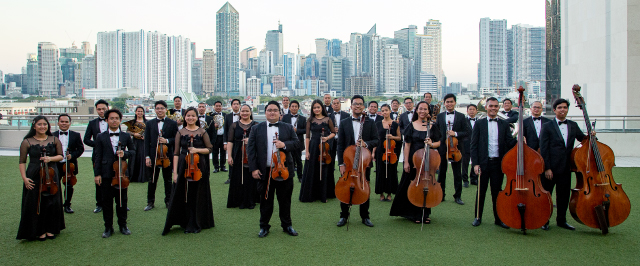
-
Marlon Chen/Conductor
Marlon Chen has been appointed Music Director and Principal Conductor of Manila Symphony Orchestra since 2019. The same year, he successfully brought the MSO to its first-ever overseas concert at China’s 5th Hunhe River Symphonic Arts Festival. Previously, Chen served MDR Symphony Orchestra and Orchestre de Paris as Assistant Conductor and has appeared as guest conductor with many of the world’s finest orchestras, including the Symphonic Orchestra of Natal. As a composer and arranger, Chen has performed his works with the major orchestras he has conducted. An American Taiwanese, he is fluent in five languages and resides in Houston, Texas.
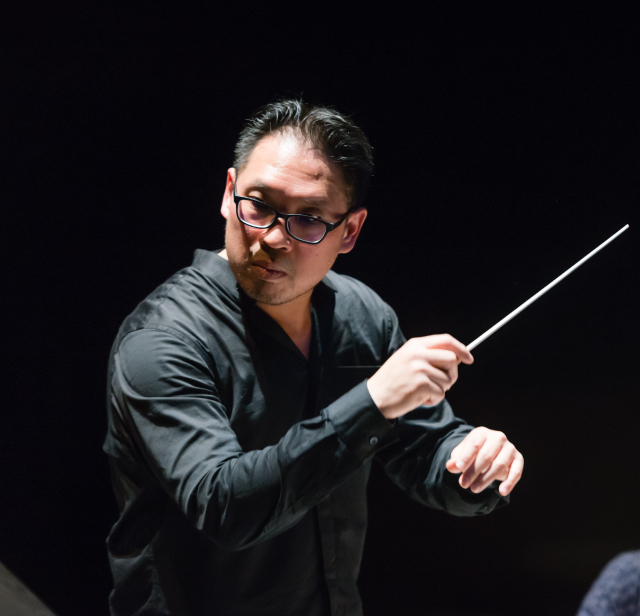
-
Damodar Das Castillo/Cello
Damodar Das Castillo was born in 2007 in Manila and is among the most exciting young Filipino cellists today. Castillo is a full scholar at the prestigious Mozarteum Music University in Salzburg, Austria, studying under Barbara Lübke-Herzl. Since the age of twelve, Castillo has been entering several music competitions, and he already has the distinction of winning five top prizes in various international music competitions in Estonia, Berlin, Dusseldorf, Italy, and the USA. In the Philippines, he has been a featured soloist of Manila Symphony Orchestra, Manila Symphony Junior Orchestra, and Philippine Philharmonic Orchestra.
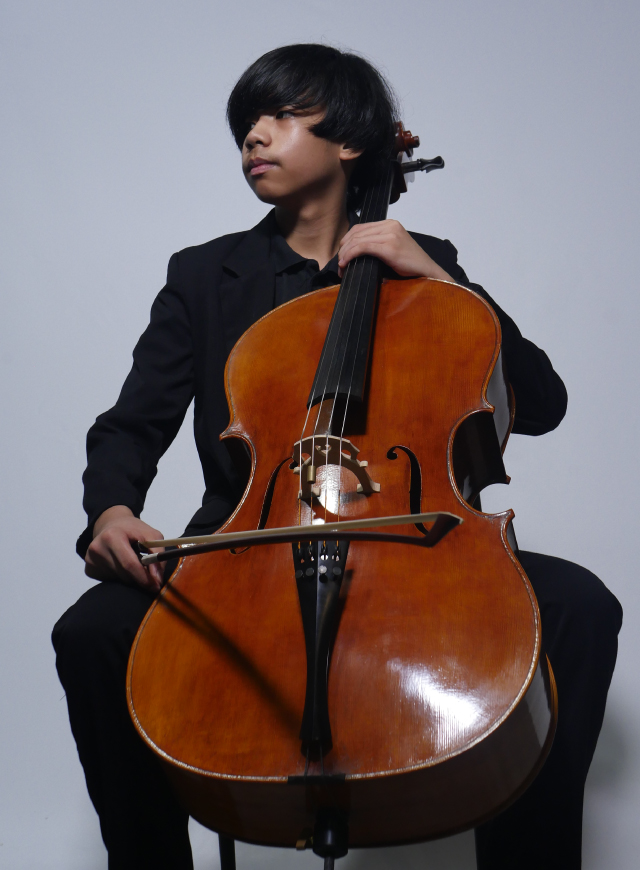
-
Ryukyu Symphony Orchestra
Since its inaugural concert in March 2001, the nonprofit organization Ryukyu Symphony Orchestra (RSO) has been providing subscription concerts alongside its educational programs at primary, secondary high, and senior high schools. The orchestra also has been hosting concerts for babies, collaborating with Ryukyuan performing arts, and organizing concerts on the remote islands of Okinawa. RSO makes appearances at events, including the 3rd and the 4th Worldwide Uchinanchu Festivals (Uchinanchu refers to the people from or who have a relationship with Okinawa), the 30th and the 40th-anniversary celebrations of Okinawa Island returning to Japan, and the 46th Conference of the Inter-American Development Bank, with the requests by the Japanese Government and Okinawa prefecture. Since 2016, OTOMO Naoto has been serving as Music Director. In 2017, RSO was well-received for its successful performance of Puccini’s Tosca in Okinawa, part of the national co-production opera project. RSO marked its 20th anniversary in March 2021 and made a Tokyo debut at the Suntory Hall in the same year. To become an internationally rich, symbolistic, and beloved orchestra of Okinawa, RSO cherishes relationships with audiences. Discographies include Ryukyu Symphony Orchestra (2005) and Okinawa Symphony Yearbook (2020).
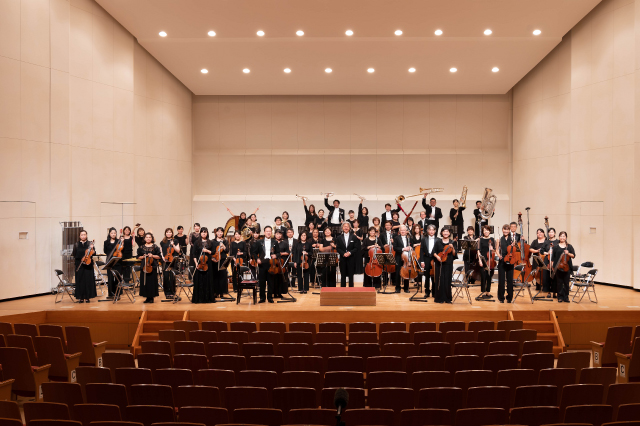
-
Otomo Naoto/Conductor
Since his debut with the NHK Symphony Orchestra at the age of 22, Otomo has led the highly competitive music scene of Japan. He currently serves as Music Director at the Ryukyu Symphony Orchestra (Okinawa) and Artistic Director of Takasaki City Theatre, and previously held the posts of Principal Conductor/Music Director at the Japan Philharmonic, Tokyo, Kyoto and Gunma Symphony Orchestras and Osaka Philharmonic. Otomo has appeared repeatedly with the Royal Stockholm Philharmonic Orchestra, National Symphony Orchestra of Romania, Indianapolis Symphony, Hawaii Symphony, and he led the Philharmonia Orchestra on its tour to Japan.
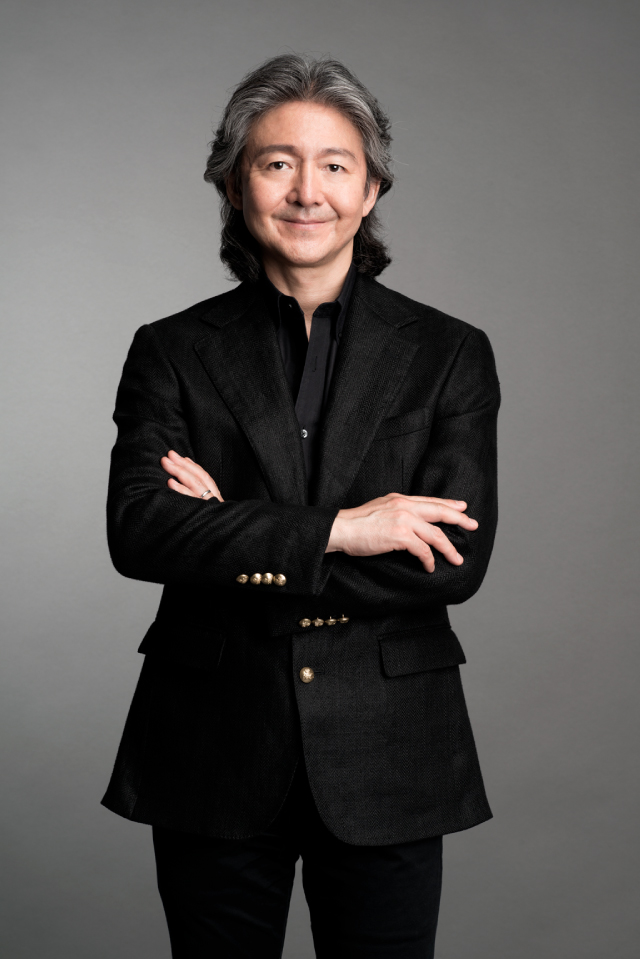
©Rowland Kirishima
-
‘Oki-gei-dai’ Ryukyuan Performing Arts Major Alumni Association
‘Oki-gei-dai’ Ryukyuan Performing Arts Major Alumni Association is a group formed by the alumni and current students at Okinawa Prefectural University of Arts (Okinawa-kennritsu Geijyutsu Daigaku) who studied or are studying major in Ryukyuan Performing Arts. The association strives to inherit Okinawa’s traditional performing arts, including Ryukyu-buyo (Ryukyuan dance) and Ryukyuan classical music, to future generations. The association members aim to pursue a high-quality in their performance skills. They have been performing at events in the local region and at commissioned concerts inside and outside of Okinawa.
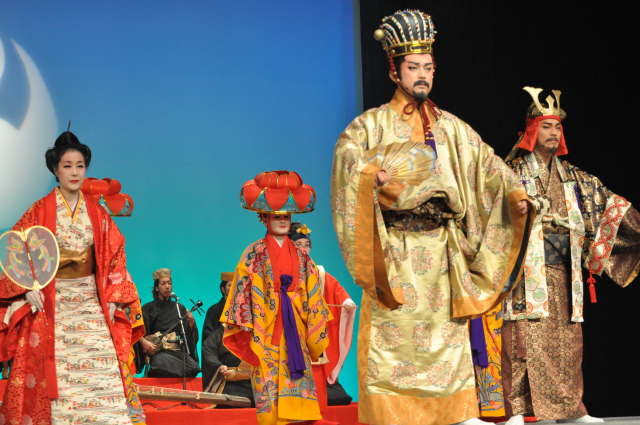
©沖芸大琉球芸能専攻OB会
-
Hagiwara Mami/Piano
Hagiwara has garnered attention as a rising pianist after becoming the first Japanese to win the 65th Geneva International Music Competition in 2010. The prestigious competition does not award first prize every year, and Mami’s victory attracted attention in various circles, as first place had not been awarded in eight years.
As for her international career, she has been invited to premier venues and orchestras in Europe and Asia, such as Orchestre de Suisse Romande, SWR Sinfonieorchester and La Roque d’Anthéron International Piano Festival.
Born in Hiroshima, Hagiwara began playing piano at the age of five. She later studied with Jacques Rouvier at Conservatoire de Paris.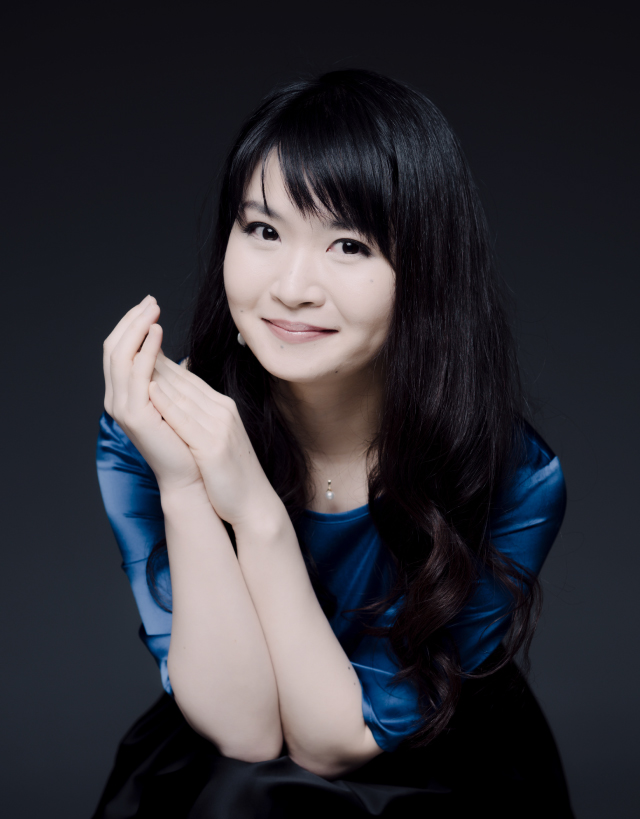
©Marco Borggreve
-
KBS Symphony Orchestra
KBS Symphony Orchestra (KBSSO) was established in 1956 under the Korean Broadcasting System. Many world-class conductors have led the orchestra over the decades, including Chung Myung-whun, Dmitri Kitaenko, and Yoel Levi. Pietari Inkinen has been appointed as the ninth music director since 2022, raising expectations for its growth from the nation’s foremost musical institution into one of the top orchestras worldwide. The KBSSO provides more than a hundred concerts annually, including its subscription series, seasonal and thematic concerts, invitational concerts for local cities and corporations, and cultural outreach activities that bring classical music to every corner of Korea. Their performance is also regularly broadcast on TV and radio, enabling the Korean public to enjoy classical music no matter the time or place. The KBSSO has been operating a digital archive service Digital K-Hall and is now writing a new chapter in its history as a digital content creator for classical music lovers in Korea. The orchestra attracted the world’s attention when Deutsche Grammophon released the orchestra’s live performance album of Mahler’s 9th Symphony (2018). European stages include the 30th-anniversary concert for Korea’s diplomatic relations with Poland and the exceptional performance at the Wiener Musikverein in 2019.
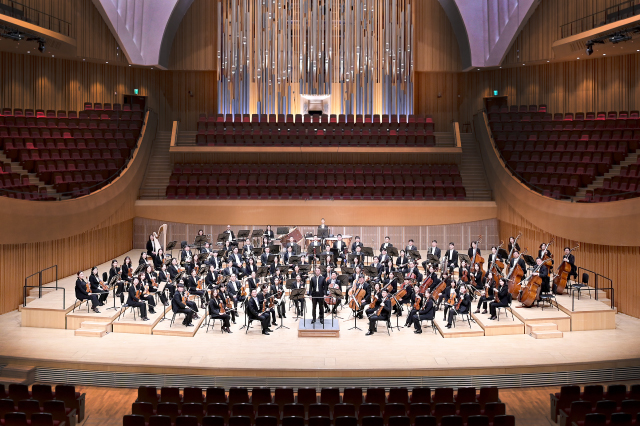
-
Hankyeol Yoon/Conductor
Born in Daegu (South Korea) in 1994, Hankyeol Yoon worked as a Kapellmeister at the Neubrandenburg Philharmonic Orchestra from 2019 to 2021. Previously he worked as an assistant conductor at Staatstheater Nürnberg, Grand Théâtre de Genève, and Stuttgart Philharmonic Orchestra and became the youngest winner of the Neeme Järvi Prize from the Gstaad Menuhin Festival in Switzerland at the age of twenty-five in 2019. From 2011 to 2021, he studied conducting, composition and piano at the Hochschule für Musik und Theater in München and completed his master’s programs. As a composer, Hankyeol won the second prize at the Luciano Berio International Composition Competition in 2020.
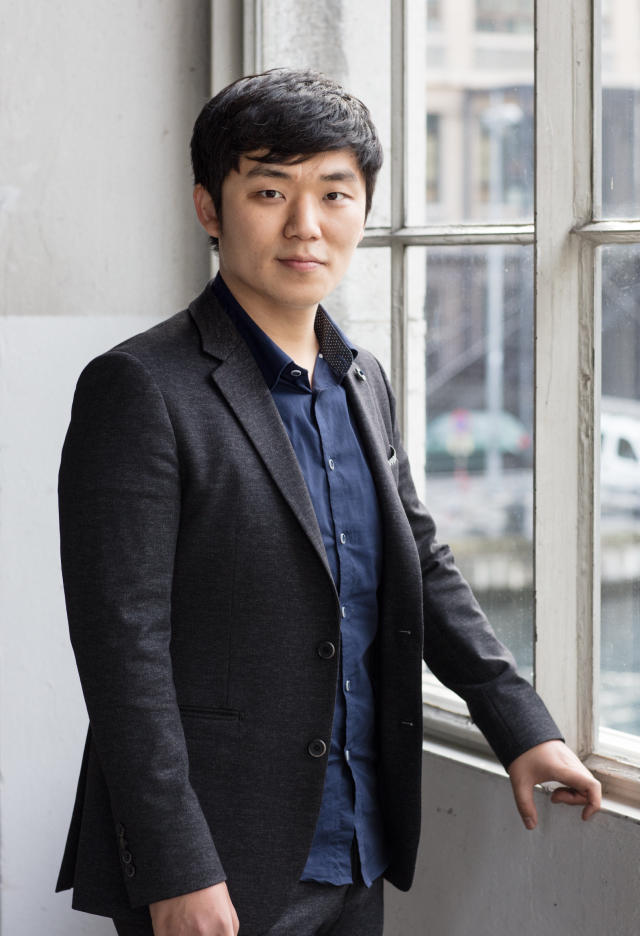
-
Bomsori Kim/Violin
Born in South Korea, Bomsori Kim has been a soloist at Musikverein Golden Hall in Vienna, Berlin Philharmonic, and Carnegie Hall since her debut in 2010. In addition to winning the 62nd ARD International Music Competition, Bomsori is a prize winner in numerous competitions, including the Sendai International Music Competition. She has had the privilege of performing under the direction of multiple conductors, including Fabio Luisi and Andrey Boreyko, with numerous leading orchestras. In February 2021, Bomsori signed the exclusive contract with the Deutsche Grammophon and recently returned to New York Philharmonic to perform Bruch's Violin Concerto under the baton of Jaap van Zweden in June 2022.
